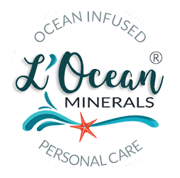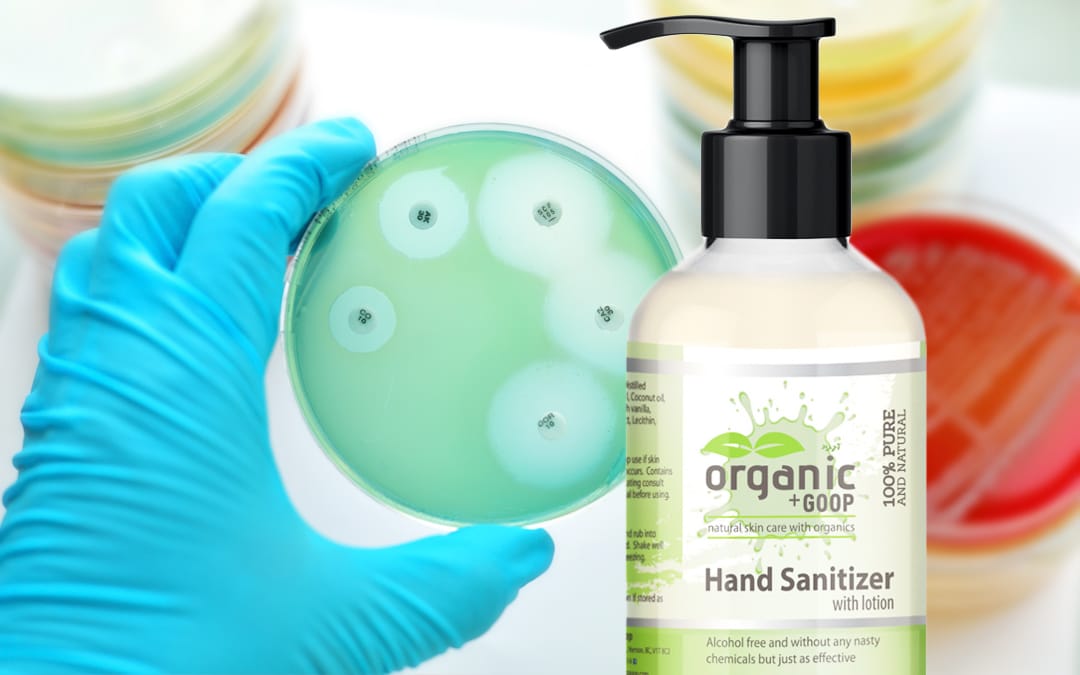Maintaining natural skin health
Healthy hand sanitizer
Science investigates effectiveness of natural anti-microbials
(sourced from google scholar)
Antimicrobial effects of Tea Tree Oil and its major components on Staphylococcus aureus, Staph. epidermidis and Propionibacterium acnes
Raman A1, Weir U, Bloomfield SF.
Major components of two tea-tree oil samples were identified using thin layer and gas-liquid chromatography (TLC and GLC). Using a TLC-bioautographic technique, the tea-tree oils, terpinen-4-ol, alpha-terpineol and alpha-pinene were found to be active against Staphylococcus aureus, Staph. epidermidis and Propionibacterium acnes whereas cineole was inactive against these organisms. The MIC values of the three active compounds increased in the order alpha-terpineol < terpinen-4-ol < alpha-pinene for all three micro-organisms. MIC values of the tea-tree oils and terpinen-4-ol were lower for P. acnes than for the two staphylococci. This study supports the use of tea-tree oil in the treatment of acne, and demonstrates that terpinen-4-ol is not the sole active constituent of the oil.
Antibiotic and anti-viral qualities of Sea Salts
Sea salt is the world’s oldest antibiotic known to man. Somewhere along the way, history books have forgotten this great medicine that bacteria and viruses offered absolutely no resistance to it whatsoever. It is the simplest medicine I have ever known. For those people who want an even more powerful medicine, just add one whole lemon juice to sea salt and its antibiotic and antiviral capabilities is extended many times.
As strange as this sounds, salt water is a highly effective antibiotic. Apart from organisms evolved to live in salty water, it is highly lethal to a large variety of common microbes. Next time you need to treat a sore throat, try gargling twice a day with a solution made from a teaspoon of common table salt dissolved in 300ml of lukewarm water. You will be amazed at the efficacy of this basic treatment. It goes without saying that salt water can be used as a topical treatment for other bacterial infections – just apply to the affected part for a few minutes at least twice a day.
The antimicrobial properties of salt (NaCl) used for the preservation of natural casings were studied by investigating the survival of six bacterial species in natural casings at different water activity (aw) levels. Individual sheep casings were inoculated with ca. 105colony-forming units (cfu) g−1 of Escherichia coli, Salmonella typhimurium, Listeria monocytogenes, Staphylococcus aureus, Clostridium perfringens and 102 cfu g−1 of E. coli O157:H7.
The casings were stored at 20±1.5 °C in different brines and dry salt, giving aw-levels of 0.90aw, 0.87aw, 0.85aw, 0.83aw and 0.75aw. Samples were taken at day 1, 3, 6, 8, 13, 20, 27 and 30 after inoculation and the number of bacteria present was determined. Based on survival curves, death rates (day−1) were calculated to quantify the reduction in log10 cfu g−1 per day.
The influence of aw on death rates was higher for Gram-negative bacteria than for Gram-positive bacteria. The death rates were overall higher for Gram-negatives than for Gram-positives. No clear reduction in the survival of C. perfringens in relation to any aw level was observed in this study.
These results indicate that the antimicrobial properties of salt used for the preservation of natural casings are sufficient to reduce the bacterial contamination (except forClostridium spores) well below acceptable levels at a water activity level of 0.85 or lower during a 30-day storage period.
A review of applications of Tea Tree Oil in dermatology
Pazyar N1, Yaghoobi R, Bagherani N, Kazerouni A.
Tea tree oil (TTO) is an essential oil, steam-distilled from the Australian native plant, Melaleuca alternifolia. It has a minimum content of terpinen-4-ol and a maximum content of 1, 8-cineole. Terpinen-4-ol is a major TTO component which exhibits strong antimicrobial and anti-inflammatory properties. Tea tree oil exerts antioxidant activity and has been reported to have broad-spectrum antimicrobial activity against bacterial, viral, fungal, and protozoal infections affecting skin and mucosa. Several studies have suggested the uses of TTO for the treatment of acne vulgaris, seborrheic dermatitis, and chronic gingivitis. It also accelerates the wound healing process and exhibits anti-skin cancer activity. This review opens up new horizons for dermatologists in the use of this herbal agent.
Anti-microbial qualities of Kelp Extracts
Total phenolic content and antioxidative and antimicrobial activities of methanolic and ethanolic extracts from brown seaweeds, Turbinaria ornata and Sargassum polycystum, were determined. Among all extracts, methanolic extract of T. ornata contained the highest total phenolic content (2.07 mg catechin/g dry seaweed) (p < 0.05) and exhibited the highest antioxidative activity as indicated by the greatest ABTS and DPPH radical scavenging activity as well as reducing activity power (RAP), compared with other extracts (p < 0.05). When different concentrations of seaweed extracts (100–500 mg/L) were used, antioxidative activities were dose-dependent. Correlations between ABTS and DPPH radical scavenging activity; DPPH radical scavenging activity and RAP; ABTS radical scavenging activity and RAP were observed. Therefore, antioxidants in seaweed extracts possessed the capability of scavenging the radicals together with reducing power. The efficacy in prevention of lipid oxidation of methanolic extract of T. ornata in lecithin-liposome and linoleic oxidation systems was studied. The extract at levels of 100–500 mg/L could retard the oxidation, regardless of chlorophyll removal but its efficacy was lower than that of BHT at levels of 50 and 200 mg/L. For antimicrobial activity, all extracts could not inhibit the growth of Bacillus subtilis, Salmonella enteritidis, and Aspergillus niger, while Staphylococcus aureus was inhibited with the extracts at 500 mg/L.
Anti-microbial qualities of fractionated Coconut Oil
Fractionated coconut oil has antibacterial properties and can be mixed with anti-bacterial essential oils to create a natural treatment for wounds. Cinnamon leaf, cedar atlas, ravensara, eucalyptus, bergamot, geranium, tea tree, thyme and pine are regarded as some of the best natural anti-bacterial essential oils. Add four to five drops of one of these essential oils to 10mls of fractionated coconut oil and apply to the area that needs disinfecting. When coconut oil has been fractionated, capric acid and caprylic acid volumes increase proportionally as other components are removed, creating a strong antioxidant and disinfectant action. Combined with its great moisturizing action, this is yet another reason fractionated coconut oil is used so much in aromatherapy and beauty treatments.
Anti-microbial qualities of Aloe Vera gel
The antimicrobial activity of aloe vera extract was tested against pathogenic bacteria like Staphylococcus aureus, Klebisella pneumonia and E.coli and fungi like Aspergillus niger and Candida at a dose of 1:20 mg/ml and 2:40 mg/ml by using cup plate diffusion method. Various solvents such as petroleum ether, chloroform and methanol were used for extracts. The results reveal that, methanol and petroleum ether at a dose of 20 mg/ml has showed significant activity against Klebisella pneumonia and E.coli whereas in fungi, methanol extract showed significant activity against Aspergillus niger and Candida. Methanol extract has showed maximum inhibitory activity against E.coli and Candida. Petroleum ether has showed moderate inhibitory activity against Klebisella pneumonia and Candida. The zone of inhibition was measured and compared with standard Gentamycin (1 mg/ml). However, in none of the above mentioned extracts the inhibition zone was not more than that found in standard i.e., Gentamycin. ANTIMICROBIAL ACTIVITY OF ALOE VERA LEAF EXTRACT (PDF Download Available). Available from: https://www.researchgate.net/publication/257948745_ANTIMICROBIAL_ACTIVITY_OF_ALOE_VERA_LEAF_EXTRACT [accessed Feb 27, 2016].
The ethanol, methanol and acetone extracts of Aloe vera gel were studied for their antimicrobial activity against four Gram-positive and Gram-negative bacteria using agar well diffusion method. The extracts showed varied levels of antimicrobial activity against the tested pathogens. The ethanol and methanol extracts showed higher activity while acetone extract, showed least or no activity against most of the tested pathogens. Fractions obtained from the extracts by Thin Layer and Column Chromatography were studied for their antagonistic properties using Spot Assay Technique. Compounds with maximum antibacterial activity isolated from the ethanol and methanol extracts were identified as p – coumaric acid (Mol. wt.165), ascorbic acid (Mol. wt.177 ), pyrocatechol (Mol. wt.110 ) and cinnamic acid (Mol. wt.148), on the basis of Gas Chromatography Mass Spectrometry. The study suggests the antimicrobial activity of the A. vera gel extract to be dependant on the synergistic effect of different compounds. With the broad spectral antimicrobial effect of A. vera gel, it could be further recommended in the treatment of various bacterial diseases.
Anti-microbial qualities of distilled, ozonated water
Ozone (O3) in a gaseous or aqueous phase has been shown to be a powerful and reliable antimicrobial agent against bacteria, fungi, protozoa, and viruses.9 It is an unstable gas capable of oxidizing any biological entity.10Its oxidative capacity at 100 ppm, 200 ppm and 400 ppm can also induce serious toxicity due to lipid peroxidation and ultimately cause DNA damage.11 A low concentration of ozonated water is sufficient to inactivate bacterial cells (0.12–0.19 mg/l) and their spores (2.29 mg/l).12 It has been shown that Streptococcus mutans, Lactobacilli casei and Actinomyces naeslundii suspended in a salt buffer can be completely killed within 60 seconds13 following exposure to ozone gas. Ozone readily dissolves and forms ozonated water when introduced into water. Ozonated water is also a powerful oxidizing and antimicrobial agent.14 In both gaseous and aqueous forms, ozone is potentially effective as a disinfecting agent for the removal of biofilms and their related microorganisms.15 The powerful disinfecting property of gaseous ozone has been utilized in dentistry to treat primary root caries,16 occlusal caries,17 dentine hypersensitivity18 and cervical sensitivity.19 It is accepted that its application at doses between 90 mg and 120 mg does not affect the physical properties of enamel.20Ozonated water has been used in the sterilization of dentures (10 ppm)21 and dental unit water-line systems.22Plaque microorganisms have shown vulnerability to ozonated water under in-vitro conditions23 (4 mg/l for 10 seconds). The main objective of this study was to determine the in situ antimicrobial effect of 0.1 ppm ozonated water on 24-hour plaque microorganisms following a 30-second rinse.

